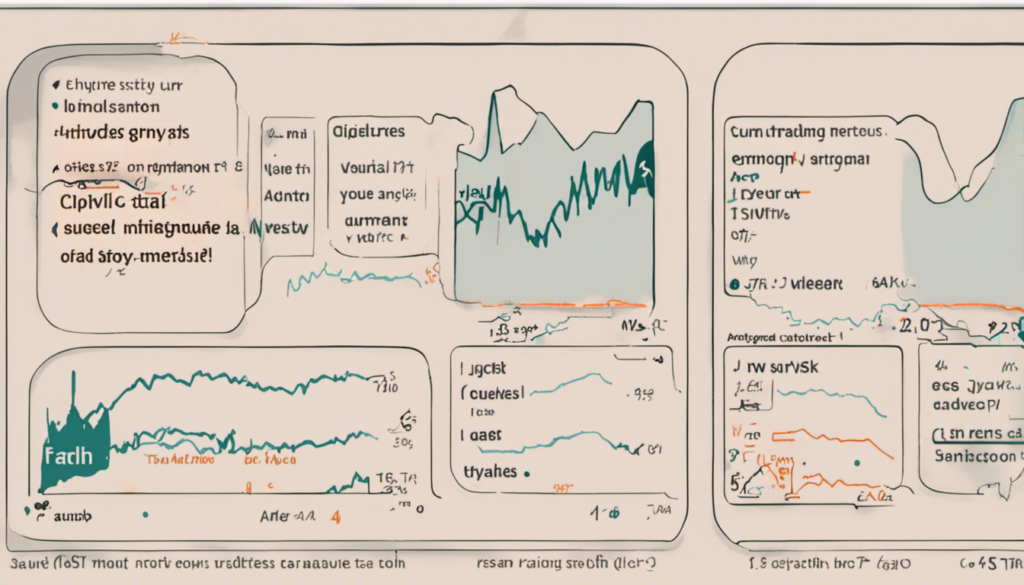How Traders Use Sentiment Analysis Algorithms to Predict Market Movements
Financial markets are constantly influenced by a wide range of factors, such as economic data, earnings reports, and geopolitical events. In recent years, traders have started to incorporate sentiment analysis algorithms into their strategies to gain valuable insights from public sentiment expressed through news and social media. By analyzing large amounts of text data, sentiment analysis algorithms can help traders predict market movements and make informed trading decisions. In this article, we will explore how traders use sentiment analysis algorithms and the impact they have on the financial markets.
Understanding Sentiment Analysis Algorithms
Sentiment analysis algorithms, also known as opinion mining algorithms, are designed to analyze text data and determine the sentiment expressed within the text. These algorithms use natural language processing (NLP) techniques to identify and classify the emotional tone of the text as positive, negative, or neutral. This classification allows traders to gauge the overall sentiment of the market participants and identify potential shifts in market sentiment.
Traders can use sentiment analysis algorithms to analyze various sources of text data, including news articles, social media posts, and financial reports. These algorithms can process and analyze large volumes of text data in real-time, providing traders with up-to-date insights into public sentiment. By monitoring public sentiment, traders can identify market trends, anticipate market reactions, and adjust their trading strategies accordingly.
Benefits of Sentiment Analysis Algorithms in Trading
Sentiment analysis algorithms offer several benefits to traders in predicting market movements:
- Improved Decision-Making: Sentiment analysis algorithms help traders make informed decisions by providing them with valuable insights into the prevailing market sentiment. By understanding the sentiment of the market participants, traders can anticipate market movements and adjust their trading strategies accordingly.
- Early Detection of Trend Reversals: Sentiment analysis algorithms can detect shifts in market sentiment before they are reflected in price movements. This early detection allows traders to capitalize on potential trend reversals and make profitable trades.
- Identification of Market Manipulation: Sentiment analysis algorithms can help traders identify instances of market manipulation by analyzing public sentiment for anomalies. This information can be used to avoid entering trades based on false signals and protect against potential losses.
- Real-Time Market Insights: Sentiment analysis algorithms provide traders with real-time insights into public sentiment. By continuously monitoring and analyzing text data, traders can stay updated on the latest market trends and adjust their positions accordingly.
Limitations of Sentiment Analysis Algorithms
Although sentiment analysis algorithms offer valuable insights, they also have limitations that traders should be aware of:
- Subjectivity: Sentiment analysis algorithms may struggle to accurately interpret context-specific nuances and sarcasm within text data, leading to potential misclassification of sentiment.
- Data Quality: The accuracy of sentiment analysis algorithms heavily relies on the quality and reliability of the data sources used. Biased or unreliable data can impact the accuracy of the sentiment analysis results.
- External Events: Sentiment analysis algorithms may not account for external events or news that can rapidly change market sentiment. Traders should supplement sentiment analysis with other fundamental and technical analysis techniques to gain a comprehensive view of the market.
Conclusion
Sentiment analysis algorithms have become a valuable tool for traders in predicting market movements based on public sentiment expressed through news and social media. By analyzing large volumes of text data, these algorithms help traders gain insights into the prevailing market sentiment and make informed trading decisions. While sentiment analysis algorithms offer numerous benefits, traders should also be aware of their limitations and complement them with other analysis techniques. With the continuous advancements in technology, sentiment analysis algorithms are expected to play an even greater role in the future of trading.




